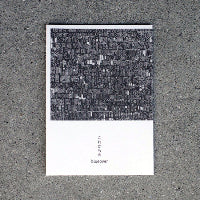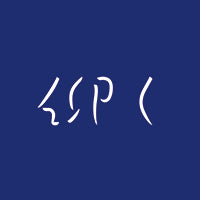Future blueover #02 | What I learned from Mingei
Value seen in folk art
Now that I have written about the current state and future of domestic production, I would like to talk about the folk crafts that Blue Over is influenced by. Please take a look at my thoughts on Mingei and how it has influenced me, as they are described in the About page and in-depth content of the Blue Over site.
Now, over the past two years, I have learned anew about Mingei, and I was also inspired by a different approach. It is an audio media called ``Coten Radio'' distributed by Coten Co., Ltd. I listened to it on the recommendation of a friend, and I was completely hooked on the content. Koten Radio gave me an opportunity to remotely recognize the way of thinking that had shaped me up until now.
Koten Radio is a popular content that has become a hot topic in the past few years, and it introduces the extremely long and deep content of history, divided into ethnic groups, religions, people, events, etc. Mr. Fukai's commentary style was very simple and easy to listen to, which combined with the relaxed atmosphere of the program, made me addicted to it. After listening to it for a while, I was able to understand the long history from a bird's-eye view (I think this was very important).
It's almost like putting together each piece (event) one by one, just like building a puzzle, and eventually you'll see the whole picture (history). Personally, I believe that the great appeal of this content is that it makes us more aware of the fact that history is always created in correlation with each other, and that it frees us from the prejudices that have arisen from a fragmented understanding of historical facts. I am aware of it.
When I learned about this perspective and reconsidered the way I think about my own brand, I was able to organize the idea of mingei from a different perspective than before. When I was young, my understanding of Mingei was limited to its physical appearance, the act of creating tools, and its background, and I could only see the context in that, always looking for the reason and understanding it. I now think that this was because I was only able to understand the definition of Mingei that Mr. Soetsu Yanagi gave.
However, by looking into the history of religion and Buddhism more broadly, a different form of folk art appeared before me.
My interest lies in folk art, but Buddhism has also had a great influence on my own way of life. However, the connections between them were only points, and there was no awareness that they were connected as lines. However, as I continued to learn more, I began to understand, albeit vaguely, Soetsu Yanagi's view of folk art from a Buddhist perspective. This led to my understanding of the beauty of no-mind that he advocated (though I have yet to discover the true meaning).
mindless beauty
I would like to offer my personal interpretation of Mr. Ryu's beauty of no-mind, which discovered Buddhist concepts hidden in folk art.
Folk crafts produced in production areas are a part of the lives of the people who work there, and they continue to produce the same items over and over again every day. It is said that the hand that creates something eventually leaves the maker's intention and the object is born without any intention. This lack of mind is synonymous with what Buddhism calls Nembutsu, and it is believed that simply being free of mind leads to the act of gaining salvation. The theory is that what is born from no-mind is salvation, and that beauty is found in salvation.
When I reconsidered the appeal of folk crafts, it all started with Sori Yanagi 's (son of Soetsu Yanagi) product design as hardware. That's how I came to know about Mingei, but since I was a designer by profession at the time, I found the appeal of Mingei mainly due to its rationality (if you can think of it as something that can be explained in terms of ease of use and functionality). I was trying to figure it out, but I was completely wrong.
The products created by Sori Yanagi have a sense of warmth (attachment) created by his hands, and they embody a depth and beauty that cannot be dismissed with rationality alone, but at the time, I was unable to read them rationally. I made the mistake of trying to do so. It was an act of complete ignorance. Mr. Sori valued the form that was born from his hands as an approach to creating forms. A figure created by repeatedly moving hands. Modern industrialization will be added to this. It seems that this was a grand attempt by Mr. Sori himself to continually create prototypes of the pure beauty that Mingei refers to. Unfortunately, I only now realize how great it is.
Now, by approaching it from a Buddhist perspective, I became aware of folk crafts that I had not been able to see before, but up until now, when interpreting the characteristics and beauty of folk crafts, I had only focused on the beauty of no-mind. However, he pretended to understand. However, it was clear that learning about the history of Buddhism gave him a clearer understanding of the beauty of non-mindfulness. This was a big realization for me. In fact, the element that has attracted me to folk art has been its utility aspect. In other words, I understood that it was functionality, the background that creates it, and its soundness, but as I studied Buddhism, it became clear that I was actually very attracted to ``mindlessness.''
In any case, there is no doubt that mingei thought has had a big influence on me. However, if you ask me if that's why I'm trying to create folk art, I can clearly say that's not the case. I don't know if I can explain it well, but I think that folk art is a cultural ideology, something that is born out of society. If the activities that Blue Over engages in are later called Mingei, then that may be the case.




